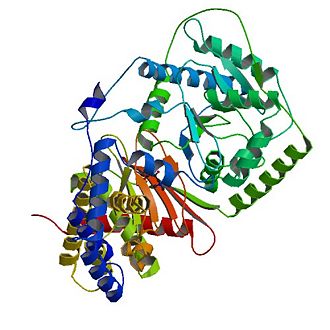Sandbox 212
From Proteopedia
Carnitine acetyltransferases (also known as CATs) are members of a large family of enzymes called carnitine acyltransferases. This family contains enzymes that play an important role in cellular energy metabolism, i.e. fatty acid oxidation. They are responsible for the directional transport of fatty acids from the cytoplasm across the inner mitochondrial membrane into the mitochondrial matrix. Hence these enzymes can be mainly found in the inner membrane of mitochondria. Carnitine acetyltransferases have a substrate preference for short chain fatty acids in their activated form (acyl-CoAs). As Carnitine acetyltransferases are major enzymes in fatty acid oxidation they are viewed as promising targets which can be used to develop successful therapeutics against diabetes and obesity.
Contents |
Biological function
Overall structure of Carnitine acetyltransferase
|
The tertiary structure of CAT consists of 20 α-helices (α1-α20) and 16 β-strands (named β1-β16) which are arranged into two equally sized domains (N and C domains ).

